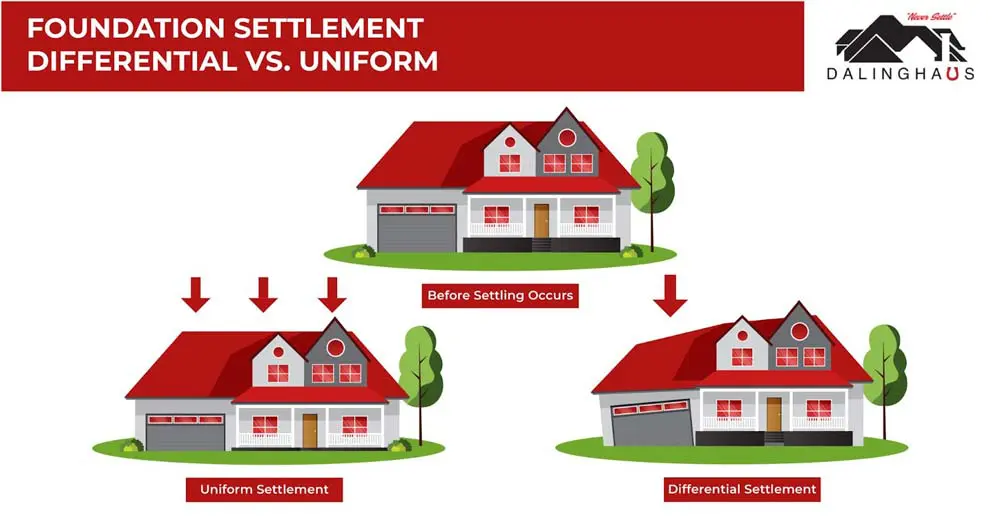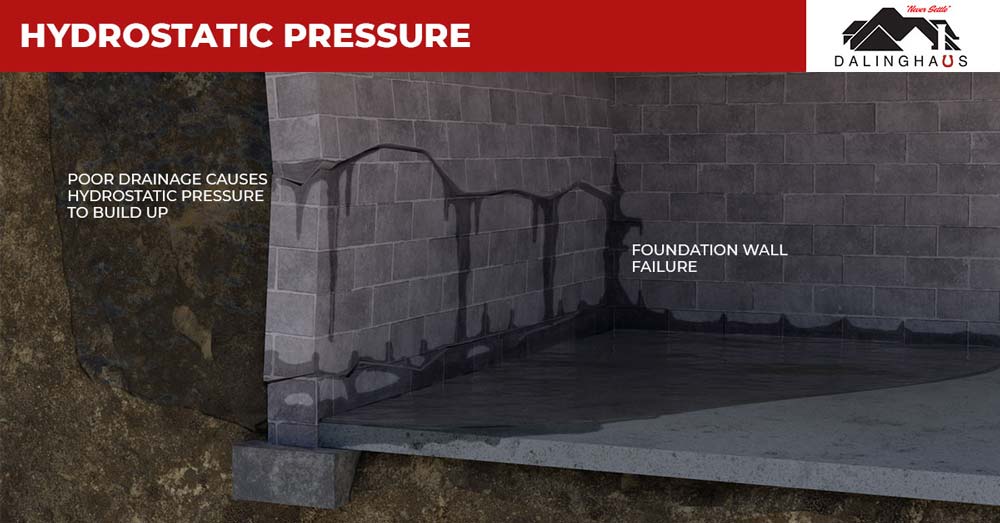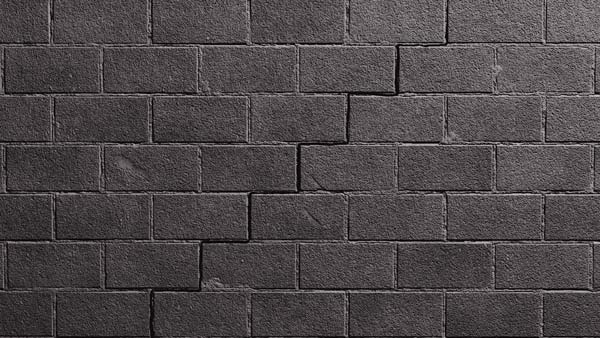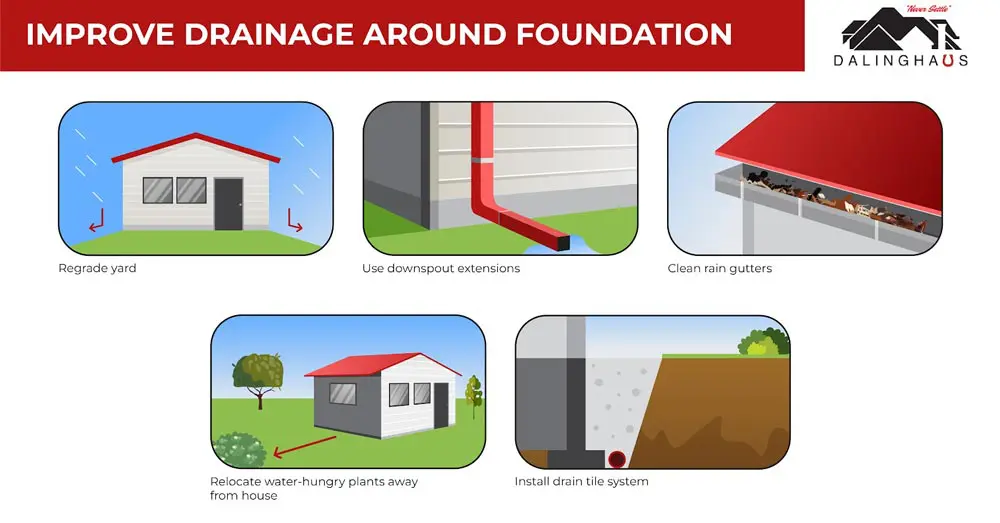If you have a masonry foundation, you may notice a stair-step-shaped crack that forms in your foundation wall. When that occurs, knowing what action you should take to fix the crack is best. In this article, we’ll cover the main reasons these cracks form and discuss some of the solutions a professional foundation repair team might take to fix your stair-step cracks.
How Do Stair-Step Cracks Form?
Differential settlement and excessive hydrostatic pressure are the primary reasons stair-step cracks might form in a masonry foundation. The sections below will explain how these issues cause cracks to form.
Stair-Step Cracks from Differential Settlement
While your home depends on its foundation for support, the foundation itself relies on the soil below for its stability. When that soil shifts or sinks, your foundation will also sink and move. This process is known as foundation settlement and can affect any type of foundation.
Although it seems like foundation settlement is bound to cause significant structural damage, that is not always the case. In many cases, a small amount of uniform settlement is expected following construction.

With that said, there is another form of settlement, known as differential settlement, that is far more damaging to the structural integrity of your home. When differential settlement occurs, your foundation will experience uneven shifts that result in structural damage that can manifest as cracks.
If you have a masonry foundation, it is common for differential settlement to cause a crack that forms a stair-step pattern that runs along the mortar between your masonry units. When you notice stair-step cracks in a foundation, differential settlement is typically the most likely cause.
Stair-Step Cracks from Hydrostatic Pressure
Hydrostatic pressure is another common cause of stair-step cracks in a masonry foundation. Hydrostatic pressure is a scientific term that refers to the force that water places on the surfaces it contacts.

Your home’s foundation is responsible for retaining the weight of the soil surrounding it. Under normal circumstances, your foundation should have no problem supporting that weight. However, when groundwater soaks the soil, poor drainage can allow hydrostatic pressure to build up and push against the foundation wall.
Over time, continual hydrostatic pressure on your foundation can cause your foundation to fail. As this occurs, you may notice that your masonry foundation walls are beginning to bow inwards. That deformation in the wall’s structure can lead to stair-step cracks forming in the mortar between your masonry units.
What Should You Do About Stair-Step Cracks in a Foundation?

Both of the sources of stair-step cracks we mentioned above are causes for serious concern. Allowing stair-step cracks to go unattended will lead to further structural damage that will only become more expensive to repair.
Since that’s the case, you should seek to fix this foundation crack as soon as possible. The best way is to hire a professional foundation repair team. While the pros should be responsible for repairing your foundation, it can help to understand the methods they may employ to do so, which the sections below will explain.
Repair for Stair-Step Cracks that Result from Differential Settlement
As we mentioned earlier, differential settlement is the most common cause of stair-step cracks in a foundation. The good news is that an experienced foundation team will offer effective services to resolve this issue.
There are many factors to consider when leveling a foundation, which can lead to different solutions. However, installing piers is one of the most common ways to address differential settlement.
Foundation piers extend deep into the earth and connect to your foundation. Once that connection is formed, your foundation repair team can raise your foundation to level it. The piers will also provide additional stability that will help to prevent differential settlement in the future.
Repairs for Stair-Step Cracks that Result from Hydrostatic Pressure
Drainage systems are excellent for conveying water away from your home and relieving hydrostatic pressure before it can cause any damage. While many drainage structures can benefit a foundation, some methods are more common than others.
One of the most prevalent drainage solutions for hydrostatic pressure involves excavating down to your foundation’s footing. The next step is to place a perforated pipe along the base of the foundation and then cover it with a material such as crushed stone.

After implementing that solution, groundwater that approaches your home will reach the crushed stone, trickle down into the pipe, and then flow away from your foundation. To further discourage water from pressing against your foundation, it is also vital to ensure that the ground surrounding your home slopes away from your foundation so that surface water flows out.
With that said, improving drainage is more of a preventative measure against future hydrostatic pressure issues than a repair option for damage that has already occurred. To repair existing hydrostatic pressure damage, foundation teams will often install either carbon fiber straps or foundation wall plates, both of which attach to the inside of your foundation and add stability where any breakage or bowing has taken place.
Do You Need to Worry About Stair-Step Cracks?
If you are wondering whether or not you must worry about stair-step cracks in your foundation, the short answer is yes. As mentioned above, most cracks result from differential settlement or hydrostatic pressure. If you fail to resolve either of those issues, they will likely worsen and cause further structural problems.
Unfortunately, a homeowner can’t fix either of those problems alone. Instead, finding a foundation team that can accurately diagnose the source of your foundation cracks and provide the ideal solution is necessary. The sooner you contact such a team, the better chance you have of reducing damage to your foundation and restoring it to full strength.
Get Help from a Professional for Stair-Step Cracks
Next time you notice a stair-step crack in your foundation, the best step you can take is to contact a foundation professional in your area to evaluate it. If you are in Southern California, Nevada, or Central Arizona, Dalinghaus Construction is the best team you can choose for any foundation concerns.
We have a proven track record of providing residential and commercial customers with foundation repair, crawl space repair, and many other services. Reach out today to learn more and take advantage of our free evaluation offer.






